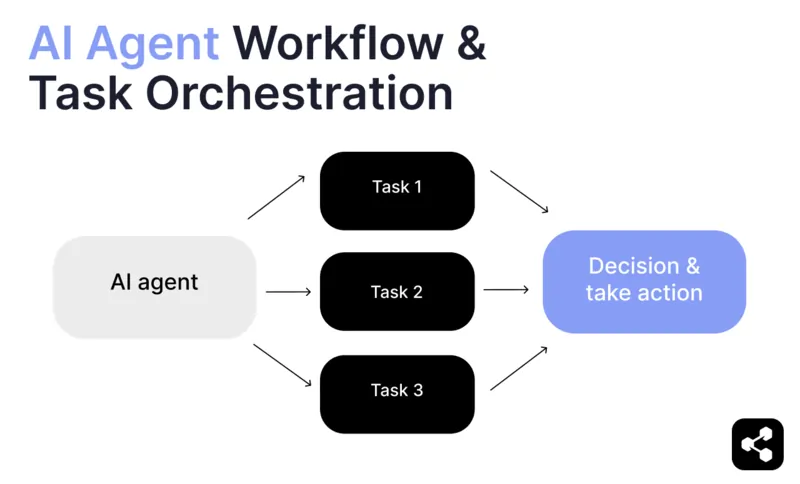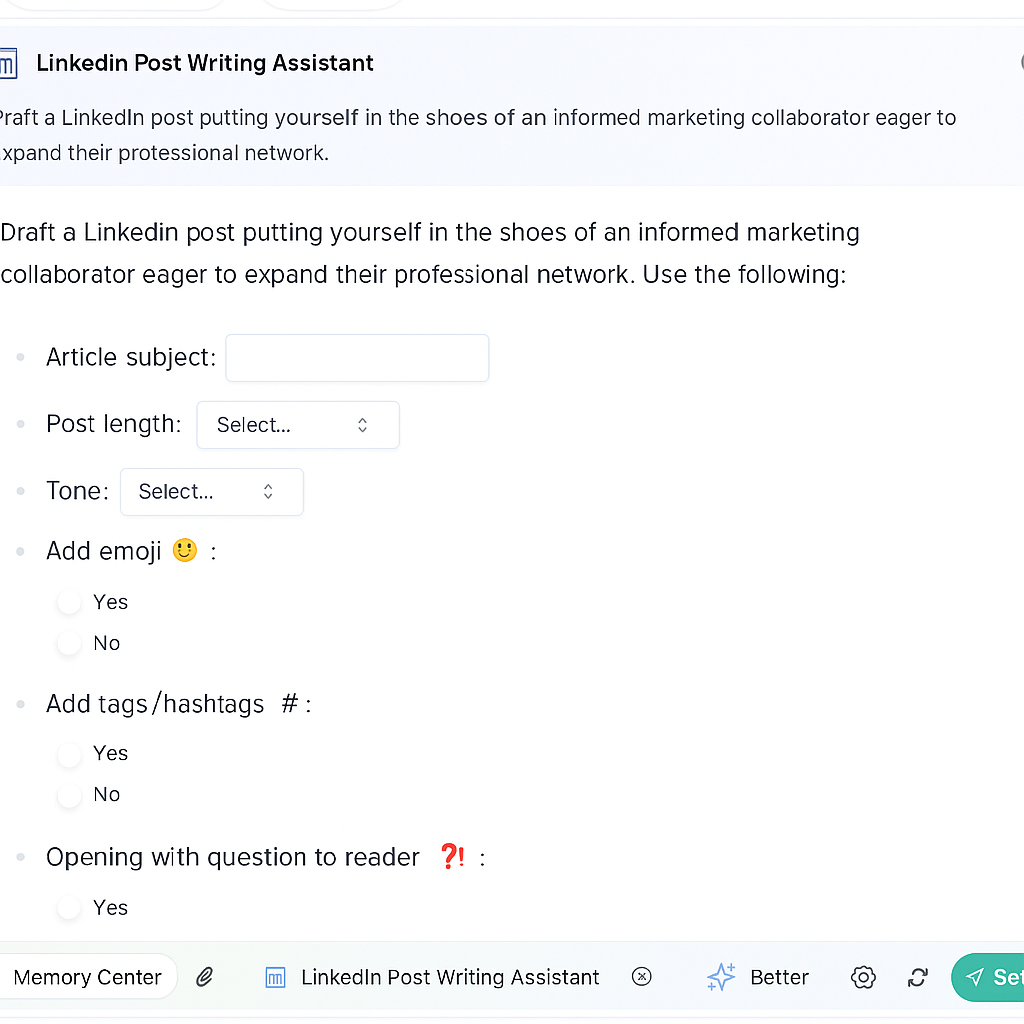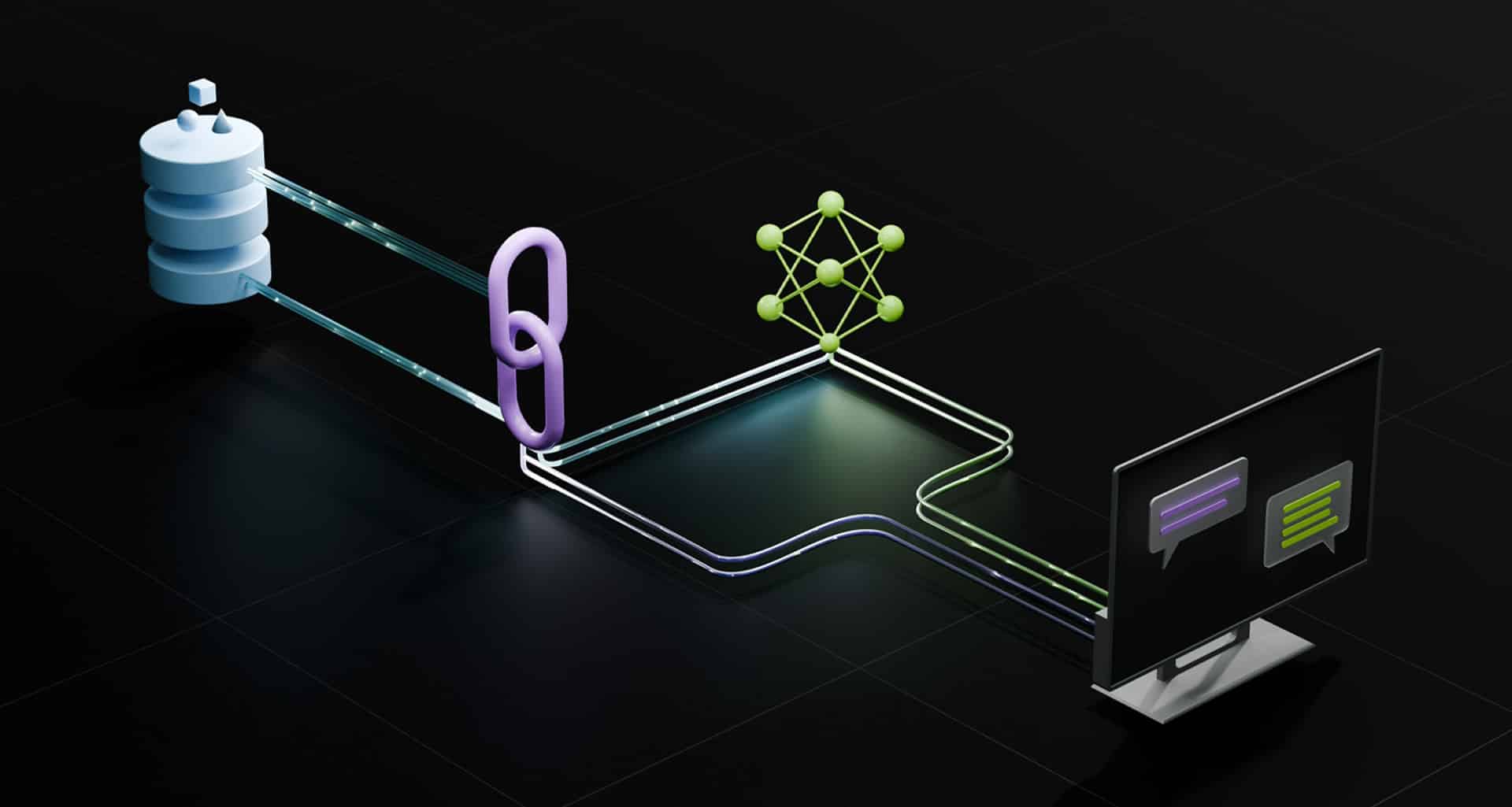What is an AI agent and how do you use it?

At the end of 2024, Klarna has publicly documented the impact of its AI assistant: 2.3 million conversations answered in one month, approximately two-thirds of customer support, and an average resolution time changed from 11 to 2 minutes, which is the equivalent of 700 full-time employees according to the company. Not a promise: an operating report available online.
However, Gartner and reuters published in 2024 highlight the difficulty of scaling up: more than 40% of agentic AI projects could be abandoned by 2027, for lack of concrete added value.
These two signals highlight the current issues around AI agents: They are a operational lever of obvious effectiveness but it requires a great rigor of setup to benefit from their full potential. In this article, we'll look at what an AI agent is, what it's for, and why overly autonomous agents aren't not always suitable.
What is an AI agent?
One AI agent is a system capable not only of generating text like a chatbot, but above all ofact independently within a defined framework. We also talk aboutintelligent agent, because it can perceive a context, reason, execute actions, and learn from its interactions. La Key difference with a simple chatbot: the agent Chain actions to achieve a result (a ticket closed, an opportunity created, content published).
Three building blocks are essential to make it operational:
- one language model to plan and decide,
- one tool catalog (connectors, APIs, databases),
- one orchestration who oversees, logs, and controls rights.
In the real world, this means: limited permissions (read-only at first), trackable action logs, and human validationss at critical stages. Without these safeguards, an agent Do not act reliably or worse, it acts too.

Use cases
Customer service - returs/refunds
Company X wants automatically close small refund requests. It creates an agent connected to the ERP (order statuses), to the helpdesk and to the PSP (payment).
Simple rules : amount ≤ €50, purchase < 30 days, no items excluded or fraud. For each ticket, the agent reads the order number, checks the eligibility, initiates the refund if OK, updates the order, sends the email to the customer and closes the file. If it is not eligible, he offers an exchange/credit and passes on to a human. Everything is logged (rule applied, amount, timestamp).
Marketing & sales - email sequence
Company X wants to get Appointment with a small sequence of emails. It creates an agent linked to the file of prospects, to The email sending tool And to Sales diaries.
The agent takes the list, removes the contacts who no longer want to be contacted, fills out email templates adapted to the type of prospect (clear benefit + small proof + call to action), checks that it is short and that there is the unsubscribe link, then schedules the shipments over a time period (e.g. 9—11 am). If someone answers “yes”, they Propose 3 slots and create the invitation. If the person unsubscribes, he updates the form in the file. At the end, we have a clean history per contact and a small dashboard of the results.
HR & recruitment - pre-selection
Company X wants speed up the sorting of resumes. It connects an agent to the ATS, HR email templates and the recruiter's agenda, with a clear scoring grid (must-have/nice-to-have). For each application, the agent Extract key information, Calculate a scoree and produces a standard summary (strengths, risks, questions). According to the score: A = proposes 3 slots and creates the event if OK; B = sends a test and puts it “on hold”; C = sends a personalized refusal and archives. Decisions are traceable, and there is human review when we are close to the thresholds.
The obstacles of a fully autonomous agent
The “autonomous” agent who does everything from A to Z is a dream, but before we go there, let's look at the concrete points of attention: real tool integrations, trustworthiness step by step and legal framework European.
- Integrations and governance. A useful agent should be able to writing and interact with your systems (CRM, ITSM, ERP).
- Reliability. Each stage of the loop perceive → reason → act may break: fuzzy instructions, outdated data, bad tools configureas. That's why Gartner Alert on the high failure rate of projects launched solely because of fashion.
- European compliance. In 2025, the CNIL publishes operational recommendations: explicit purposes, minimization, information for people, safety measures and test documentation. Businesses that align their agents with these principles reduce the “regulatory unknown.”
- AI Act: calendar and obligations. The first obligations for general-purpose models start starting on August 2, 2025, and then expand to high-risk systems by 2026. Practical translation: traceability, transparency, risk management. Anticipating these requirements in your workflows avoids redesign at the last moment.
Intermediate conclusion: In 80% of organizations, the safest path starts with supervised, parameterized, supervised agents, with increased autonomy progressive.
Understanding the agency: the example of an order refund
The algorithm is simple to explain, but complicated to make work.
Here are the 5 steps, illustrated by a concrete case:
Perceive : extract the context useful (brief, internal policies, authorized data).
- example : the agent receives “I received my order late, I would like to be reimbursed”. It identifies the order ID, looks for the refund policy (delay > 7 days) and queries the authorized logistics data.
Reasoning : divide the mission into subtasks, choose which tool to call and in what order.
- example : the agent decides to check the delivery time in the ERP, check the eligibility, then call the payment API before updating the CRM.
Act : execute observable actions (files, requests, updates), with controls.
- Example : it queries the ERP (order delivered 10 days late), triggers a refund via the payment API and changes the status of the customer ticket in the CRM.
Evaluate : check the sally (format tests, business rules), repeat if necessary.
- Example : the agent verifies that the refund transaction has been confirmed and that the ticket is marked “closed”. If unsuccessful, it attempts or escalates to a human.
Tracer : record prompt, called tools, results, decisions — to audit and improve.
- example : the agent keeps a complete log (customer message, rules applied, APIs consulted, final response) to allow an audit in the event of a dispute and improve the workflow.
The different types of AI agents
- AI co-pilot (conversational co-pilot) : one virtual assistant that helps a human write, summarize, or rephrase. Quick to set up thanks to the solutions ofNo-code AI, it presents few risks and is often the first step in AI automation.
- Tool-use agent : one intelligent agent able to choose and use tools (requests, files, APIs) with human validation. It is an evolution of the simple GPT agents, because it acts within existing business systems rather than remaining purely conversational.
- Workflow agent : one AI agent that executes several steps in succession (trigger → enrichment → action → quality control → delivery). This type of AI workflow typically includes breakpoints and human verification, making it more reliable for complex business processes.
- Multi-agents/“autopilot” : one autonomous agent that coordinates several specialized roles (for example: content, data, compliance). Very powerful, but expensive to make reliable, it is not always necessary at the start. This model pushes the furthestAI autonomy, but requires increased governance and oversight.
Are you ready to automate everything?
Automating everything, right away, is an attractive promise: we imagine more pace, fewer deadlines and better maintained costs.
In practice, we progress better step by step. The first step may be an AI agent that helps you perform repetitive tasks according to your rules. The human keeps the hand for the final validation when brand image or compliance require it.
Concretely, you set a small recipe : The substructure of the content, the your, a few stresses And key words. The user fills out a short form: the theme, the target, the angle. The agent applies these rules and generates the requested content.
This is precisely what the configurable AI agents. They are not intended to replace humans, but to rigorously perform repetitive tasks, while leaving final validation where brand image or compliance require it.
Result : fewer rewrites, more regularity, and strengthened governance. The good starting point is not to automate “everything”, but to target a concrete case (for example the LinkedIn publication), to measure the gains, and then to gradually expand to other uses such as CRM qualification or meeting minutes.

Complete tutorial for creating an agent on Delos
Objective: a “Post LinkedIn B2B” agent who produces posts consistent, trackable, configurable.
Step 1 - Open the Library
From Delos, go to Library.
Step 2 - Choose the application
You can choose to create an agent for Assistant; Docs; Docs; Scribe; Recap; Explore.
Step 3 - Describe what the agent should do
Describe your prompt:
- Item subject : the theme of the day.
- Post length : short/medium/long (character constraint).
- tone : clear/educational/expert.
- Emojis : yes/no.
- Tags/hashtags : yes/no (list allowed).
- Opening question : yes/no (to stimulate comments).
- ...
Delos generates the Prompt automatically based on these choices.
Step 4 — Test the prompt:
You can now test the prompt and change it manually to get the settings you want.
Step 5 — Share the prompt with colleagues
Save this setup as Team agent. Result:
- Production time Divided by 3 to 5,
- Same style from one author to another,
The same method can be applied for any agent as an agent for your Meeting minutes.
How Delos simplifies agency (and secures scaling)
Delos Propose an approach No-code and Sovereign to create parameterized prompts And AI workflows who respect your rules.
- Parameterized prompts : you define a Template (e.g. “LinkedIn B2B Post”) with variables. Teams fill in the fields, the agent executes.
- Multi-model orchestration : the tool automatically selects the right model according to the task (writing, extraction, structuring), combining LLMs.
- European accommodation and RGPD policies aligned with CNIL recommendations.
Do you want to create your first agent? You can try the platform for free by clicking on this link: Try Delos for free.
Ready to begin with Delos?
Start using Delos now with unlimited credits for 15 days, or contact our teams for personalized support.






